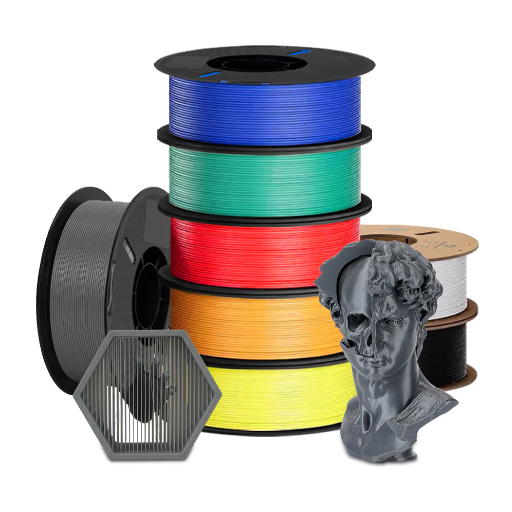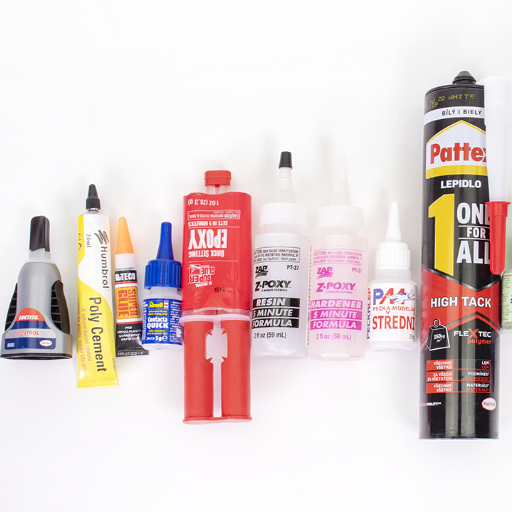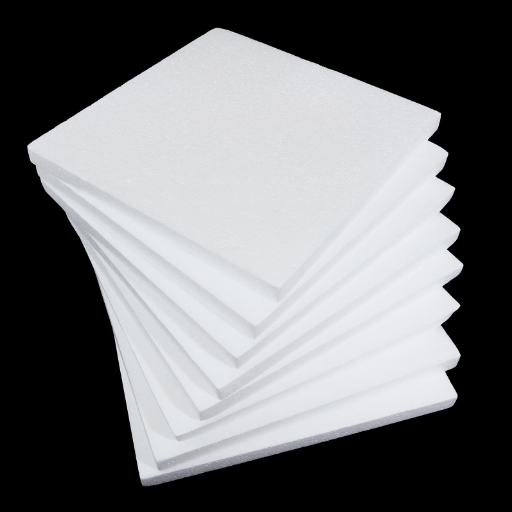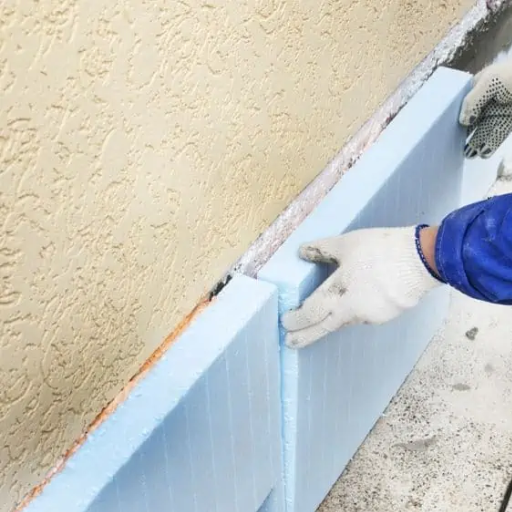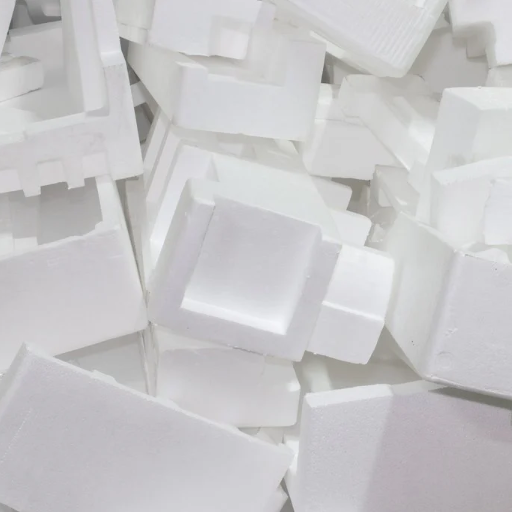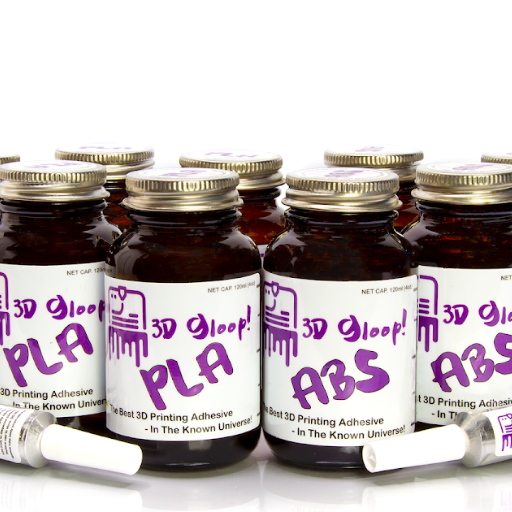This is not an easy task, but removing scraped epoxy from concrete floors is achievable. Ensure you have the necessary tools and knowledge. Have you ever had a DIY job go wrong? No worries, this guide will equip you with knowledge about restoring surfaces and preventing them from going beyond repair. I will explain proven techniques that work every time so you can understand the process fully. This will help you gain the knowledge and skills necessary to successfully remove cured epoxy from concrete.
What are the best methods to remove epoxy from concrete?

Depending on the project and equipment in hand, the best techniques to remove epoxy from concrete include a mechanical, chemical, or thermal epoxy removal approach. For bigger pieces, epoxy removal through mechanical means such as grinding or shot blasting is highly effective due to the rate of efficiency in wearing down the epoxy layer. For medium-sized areas that require a refined technique, there are chemical strippers specially made for epoxy which soften the coating and make scraping easier. For softer epoxy, peeling it off gets easier when infrared heaters or heat guns are used to soften the epoxy. Remember to wear the proper equipment to ensure the process is effective and safe.
Chemical removal techniques for epoxy on concrete
chemical removal methods seem ideal for epoxy coatings on concrete surfaces. I suggest high-quality epoxy strippers designed for this task. These types of strippers work their way through epoxy layers, breaking its bonds and allowing for effortless scraping without concrete damage underneath. Always read the instructions and carry out a small test patch first. For your own safety, I cannot stress enough the necessity of using appropriate personal safety equipment, including gloves, safety goggles, a respirator, and working in a well-ventilated space. This method has always worked in a timely and professional manner for my projects, and I trust it will work for others too.
Mechanical methods to remove cured epoxy flooring
Epoxy floor removal by mechanical means encompasses the use of specific machines. Such machines may include floor grinders, shot blasters, and diamond grinding machines. To widen the scope for more precision on smaller regions, handheld scrapers with carbide tipped oscillating blades are used. Removal, if done too roughly, may prove detrimental for the surface underneath so care should be taken towards striking a balance. These methods are very efficient when it comes to removing thicker epitomes, however, for faster and more successful results, training and coveralls should be put in place to achieve success in a safe manner.
Heat-based approaches for epoxy removal from concrete surfaces
In respect of heat methods for the removal of epoxy, I have found these methods effective in breaking down coatings while minimizing damage on the concrete surface. Tools like heat guns or infrared heaters can help soften the epoxy, making it easier to cut out with a putty knife or other similar tools. Suchan approach is especially helpful in precise work or when working on complex surface details. However, I always advise to use caution since excessive heat can change the texture of the concrete or worse case, discolor it. That’s why I make sure I fully control the temperature and protective equipment is worn to avoid heat injuries.
How do you effectively remove epoxy glue from concrete before it cures?
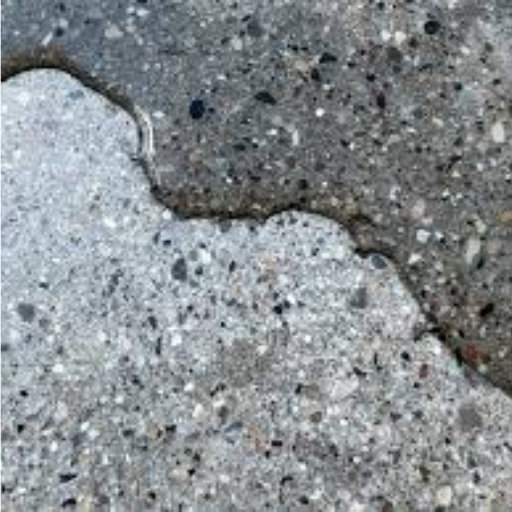
To avoid the headache of removing epoxy glue off of concrete surfaces, it’s best to soak the glue as soon as possible with either acetone or isopropyl alcohol. Once that is done, grab a stiff bristle brush and gently scrub the area without applying too much pressure that may result in damaging the concrete. Once you are finished scrubbing, use a clean cloth to wipe down the surface and repeat the steps again if you feel as though it is necessary. Prompt response is vital in this case and it is highly recommended that one must tackle this task as soon as possible, otherwise, when the epoxy cements itself, removal turns tedious.
Quick action steps for removing uncured epoxy
cleaning uncured epoxy is perhaps the most critical task in my job that requires swift action and precision. I suggest isopropyl alcohol or acetone to break the adhesive bond well. Pour it over the area and ensure the surface is soaked with the solution. After that, use a brush with stiff bristles and work the solution into the epoxy so that it can work free from the concrete. Be careful not to overapply it as concrete, while strong, can get stained or damaged if scrubbed too much. After that, take a clean cloth and scrub the area, if there are any remaining marks, repeat the process. Always remember to hurry, the longer you wait, the more difficult it will be to clean once the epoxy cures.
Best solvents for removing epoxy resin before hardening
I would suggest using both isopropyl alcohol and acetone for solvent epoxy resin removal prior to hardening. Acetone is ideal for tough applications because it is stronger, though slower. Isopropyl alcohol is always at hand, forgiving to users, and efficient for breaking down uncured resin. When repairing, use either solvent liberally. Be sure to give the solvent some time to work before scrubbing the area with a brush. Remember to follow safety practices and ensure good ventilation when working with these solvents. It works faster. When using solvents, liberal application is recommended. Allow time for the solvent to work before scrubbing the affected area with a brush. Then, make sure the workspace is well ventilated and the safety procedures are followed while using the solvents.
What tools and materials do you need to remove epoxy from a concrete floor?

In my federal contracting experience, I have found that the necessary tools include a heat gun, a wire brush, and a floor scraper. If the job is tougher, an angle grinder with a diamond cup wheel makes the job significantly easier. For softer compounds or solvents, using acetone or store-bought epoxy removers works best. The protective equipment needed is gloves, fume masks, and debris goggles. This gear will keep the fumes and debris away from you. Having a mop, rags, and a bucket nearby allows for cleaning of the area after the epoxy removal. These tools have worked the best for me in the past, and I have never been unsatisfied.
Essential safety equipment for epoxy removal
Essential safety equipment for removing epoxy includes gloves to protect your hands from chemicals and sharp edges, safety goggles to protect your eyes from splashes or debris, and a respirator to prevent the inhalation of harmful fumes. Your workspace should be well-ventilated, and you should always wear appropriate clothing to limit skin exposure. Focusing on safety is paramount for successful and risk-free epoxy removal.
Recommended tools for scraping and grinding epoxy
As far as scraping and grinding epoxy, I believe the best tools are dependent on the size of the job as well as the particulars of the work to be done. Personal, manual scraping, I strongly suggest a solid paint scraper or putty knife that has a strong handle for comfort and has great ergonomics. For larger areas or more stubborn regions, an oscillating multi-tool equipped with a scraper head or a carbide blade works wonders to remove epoxy. When it comes to grinding, a quality angle grinder with a diamond grinding wheel is best suited for the tougher epoxy coatings. When used with the right hands and technique, these tools will yield great results.
Effective solvents and chemical removers for epoxy
You can get rid of epoxy with acetone, denatured alcohol, or commercial epoxy removers. For fresh spills, softening epoxy, and acetone areas, acetone is great. Denatured alcohol also works well on delicate surfaces. Specialized epoxy removers with tough ingredients like methylene chloride work great on the tougher jobs. Remember to maintain good ventilation along with personal cleansing equipment to maximize safety and efficiency.
How can you remove hardened epoxy from concrete without damaging the surface?

epoxy removal from concrete surfaces should be done using a systematic approach so as to avoid damage to the surface. Like many other materials, I recommend softening epoxy with a heat gun first. Once the appliance is turned on, start scraping the epoxy off, but with the right amount of force. If residue is left behind, a specific epoxy remover can be used, but always scrub in accordance with the instructions given on the packaging. The first step is always to conduct compatibility testing on a surface level smaller than the area you intend to clean. Safety still comes first; use gloves and avoid breathing in any fumes. Most importantly, take your time.
Gentle methods for removing cured epoxy from delicate concrete
When dealing with thin concrete, the most damage control method is to very lightly scrape the epoxy with a plastic putty knife that will not scratch the surface. If residue is still present after this, apply a minimum amount of specialized epoxy remover after first testing a small inconspicuous area. Make sure to ventilate the room as well as wear gloves throughout the entire process. Being patient, gentle, and careful is vital when working with delicate concrete.
Steps to protect concrete while removing stubborn epoxy
- Assess the Condition of the Concrete
the first step is knowing the surface you are dealing with. For example, I always check to see if there are existing cracks or any damage that may worsen during epoxy removal. This helps me determine the most conservative removal method available.
- Use the Right Tools
Use non-abrasive materials where possible. I suggest using tools such as plastic scrapers or soft brushes so the scrubbed surface does not get scratched or damaged. I also recommend against using metal tools unless there is no other option as they severely damage the surface.
- Apply Heat or Solvent Carefully
I have always found a heat gun useful for loosening stubborn epoxy, assuming the temperature is highly controlled so that the concrete is not negatively impacted. Another alternative is using a concrete solvent, which works well, but must be done on a small area first to check for discoloration.
- Work Gently and Methodically
The most important part to remember is to be patient. I make calm, calculated movements over sections of residue without forcing the tools or applying too much pressure, which protects the concrete, as well as simplifies the clean up.
- Finish with a Cleaning Solution
In order to make sure that the area is entirely clean, I finish with a light cleaner. A mixture of water and non-oxidizing soap will suffice. This final step clears away any remaining traces of epoxy cleanser or solvents while bringing back the surface’s original appearance.
What are the challenges of removing epoxy coatings from large concrete areas?

Eliminating epoxy coatings from extensive areas of concrete comes with its fair share of challenges, mostly centered around the methodical skillset, time consumption, and specialized equipment that is required. Because epoxy is exceptionally hard and durable, it normally requires the use of an industrial grade grinder or a chemical stripping agent to remove it, as traditional methods will not work. Furthermore, achieving consistency in removing these coatings across large surfaces is hard, as any lack of precision results in inconsistency. Great care should also be taken to safety risks, as the chemicals and dust from grinding can be detrimental to health without appropriate regulation.
Strategies for tackling extensive epoxy floor removal
Based on my experience, it seems that preparing for large projects like epoxy floor removal is crucial to getting the best results. First, I make sure to assess the scope of work and select my tools correctly. For large areas, I have an industrial grade grinder with diamond tooling and it works wonders. If there are particularly stubborn portions, I will try using chemical stripping solutions, but only in places where proper ventilation is guaranteed, and with the appropriate PPE on. My number one priority is always safety, especially with dust control using HEPA filtered vacuums and wearing respirators for everyone’s safety. In the end, I would recommend a methodical approach by breaking the area down into segments to achieve better control and uniformity, which will allow for an even surface post epoxy removal.
Time and cost considerations for large-scale epoxy removal projects
Both the duration and expense associated with the removal of epoxy at scale are impacted by the area size, thickness of the epoxy layer, as well as the tools and techniques employed. In terms of average time saving, mechanical grinding or shot blasting tend to be more efficient. However, the equipment may be costly to procure. Labor intensity is also an important factor; larger squads are able to complete jobs faster but add to the cost. In addition, effective preparation and cleanup work must be factored into the average time spent on site and budget. A feasible estimate often accounts for good quality work and the resources spent, attempting to achieve efficiency and cost-effectiveness.
Are there any eco-friendly ways to remove epoxy from concrete surfaces?

Indeed, there are effective and environmentally friendly approaches for removing epoxy from concrete which I find eco-friendly and recommend implementing. One of them is the use of soy or citrus based epoxy removers which are biodegradable and less aggressive when compared to normal chemical strippers. These paints work like deconstructions for the epoxy as they do not produce any toxic gas that can harm the surroundings. Another method involves the use of dry ice blasting, which is a mechanical form of cleansing that does not require the use of chemicals. It is a very effective process that strips the epoxy clean and does not leave any hazardous waste behind. In my view, these solutions appear to be the best of both worlds when considering their performance against sustainability.
Natural and biodegradable epoxy removal solutions
Soy and citrus based epoxy removers are exceptional because of their natural composition and effectiveness. They are non-toxic, biodegradable, and greatly more gentle than chemical strippers. Moreover, dry ice blasting is completely chemical free and enables effective and clean removal of epoxy whilst protecting the worker as well as the environment. These methods are effective and highly sustainable, making them ideal for numerous applications.
Environmentally safe techniques for epoxy floor removal
In my professional practice, the criteria for most environmentally and socially friendly methods of epoxy floor removal focus on the least possible impact to humans and nature, while still being effective. Epoxy removal through peripheral methods like grinding and shot blasting rank among the best as these methods do not rely on the use of strong solvents. For precise cuts, I suggest laser ablation since it is a clean and resource-efficient method. Also, providing adequate ventilation and dust extraction during the removal process protects the health of the workers and the environment. These methods achieve effective epoxy removal while taking sustainability into account.
How do you clean and prepare concrete after removing epoxy adhesive?

After removing an epoxy adhesive, I always make sure to clean and prep the concrete. My first step is to ensure there is no dust or dirt particles lingering by sweeping and vacuuming the area. Thereafter, I take concrete degreasers or cleansers to remove any left over epoxy along with grease or oil contaminants. In order to achieve a smooth surface, I subject the concrete to light grinding or shot blasting to eliminate the stubborn spots. Once these steps have been completed, I check for cracks on the surface. If there are any, I use a concrete patching compound to get rid of them. These steps guarantee prep work is done so that further treatment or coatings can be done seamlessly.
Post-removal concrete surface treatments
In the area of post-removal surface treatment, I always underscore the need for an approach that fits the intended purpose of the surface. After undertaking the necessary cleaning and preparation of the concrete, I suggest treatment begins with a high-quality primer that will guarantee best adhesion of any further coating or sealant. In cases where heightened strength is required, such as industrial floors, a polyurethane or epoxy coating protects the surface from abrasion and moisture and is an excellent choice. For beauty purposes, I often suggest polishing or staining the surface, which also protects the surface markedly. The important factor is to identify the needs of the surrounding environment and the surface’s demands so that every measure taken meets the ultimate goal.
Ensuring complete epoxy residue removal from concrete
One of the fundamental steps in surface preparation of a concrete substrate involves removing all epoxy residues. In my own experience, a good starting point would be performing either a mechanical grinding or shot blasting of the surface to get rid of most of the residue with minimal surface damage. If any tough spots remain, a shaped chemical cleaner specializing in epoxy removals can take care of them. However, I always advise to not completely clean out any chemicals to protect against adhesion failure of the surface treatment in the future. Finally, performing a visual inspection alongside a pH surface check will establish if any residues remain. Following these steps will not only prepare the surface, but also ensure longevity of the final surface finish.
Reference
- Webfoot Concrete Coatings: Removing Epoxy from Concrete
- Garage Journal: Removing Epoxy from Floor
- Loctite Consumer: How to Remove Epoxy from Concrete
Frequently Asked Questions (FAQs)
Q: What is the best way to remove cured epoxy from concrete floors?
A: The best way to remove cured epoxy from concrete floors depends on the size of the area and the thickness of the epoxy. For small areas, you can use a chemical stripper or adhesive remover. For larger areas, mechanical methods like grinding or shot blasting are more effective. Always wear protective gear, including gloves to protect your skin, when working with epoxy removal methods.
Q: How do I remove epoxy paint from a concrete surface?
A: To remove epoxy paint from concrete, you can use a chemical stripper specifically designed for epoxy, or use a grinder to remove the paint mechanically. Apply the stripper according to the manufacturer’s instructions, then scrape off the loosened epoxy. For stubborn areas, you may need to repeat the process or switch to mechanical removal methods.
Q: Can I use acetone to get epoxy off concrete?
A: Acetone can be effective for removing small amounts of uncured epoxy from concrete. However, for fully cured epoxy, acetone alone is usually not strong enough. In such cases, you’ll need to use a stronger chemical stripper or mechanical methods to remove the hardened epoxy from the concrete surface.
Q: What safety precautions should I take when removing epoxy from concrete floors?
A: When removing epoxy from concrete floors, always wear protective gear including safety goggles, a respirator mask, chemical-resistant gloves, and long-sleeved clothing. Ensure proper ventilation in the work area, especially when using chemical strippers. If using a grinder or other power tools, follow all safety guidelines and wear appropriate hearing protection.
Q: How do I use a grinder to remove epoxy from concrete?
A: To use a grinder to remove epoxy from concrete, start by attaching a diamond grinding wheel to the grinder. Work in small sections, moving the grinder in a circular motion across the surface. Keep the grinder flat against the floor and move steadily to avoid creating uneven areas. Vacuum the dust frequently and wear appropriate safety gear throughout the process.
Q: What is the process for removing epoxy flooring completely?
A: To remove epoxy flooring completely, start by assessing the thickness and area of the epoxy. For thin coatings, chemical strippers may suffice. For thicker layers, use a floor grinder or shot blaster to remove the bulk of the epoxy. Follow up with hand scraping or additional grinding to remove any remaining residue. Finally, clean the concrete surface thoroughly to prepare it for any new applications.
Q: How can I remove cured epoxy glue from plastic or glass surfaces?
A: To remove cured epoxy glue from plastic or glass, first try to scrape off as much as possible using a plastic scraper to avoid scratching the surface. For the remaining residue, apply a specialized epoxy remover or a mixture of acetone and denatured alcohol. Let it sit for a few minutes to soften the epoxy, then gently scrape away the loosened adhesive. Be cautious with plastic surfaces as some solvents may cause damage.
Q: Is it possible to remove epoxy without damaging the concrete underneath?
A: While it’s challenging to remove epoxy without any impact on the concrete, you can minimize damage by choosing appropriate removal methods. Chemical strippers are generally less abrasive than mechanical methods. If using a grinder, opt for a less aggressive grinding wheel and work carefully. Professional shot blasting can effectively remove epoxy while causing minimal damage to the concrete surface.
















